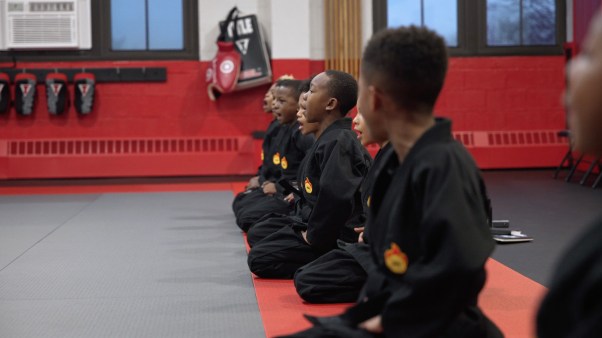The Vision Chart
Lou Diaz Wheaton Evangelical Free Church Wheaton, Illinois
When I came to WEFC in 1991, the church was celebrating its fortieth anniversary with the theme “A Vision Revisited, A Vision Renewed.”
During a Concert of Prayer, we had people contribute their vision ideas, and as leaders we compiled them into five “vision points”:
- A healing community
- Intentional disciple making
- Target community evangelism
- Facility expansion
- Church planting
Then we distributed a Vision Chart, with the five components as headings across the top. Underneath was a brief description and then blank space for people to write the specific way they would be willing to help fulfill that vision point for the next year. We asked everyone—from new members to charter members, to indicate how they would help—whether praying, giving, assisting, or leading a particular aspect.
In eight years, the entire vision was fulfilled! Specific ministries emerged from the Vision Chart such as Stephen’s Ministries, disciplemaking small groups, community impact efforts, a new worship center, and a church plant that’s now reaching 240 seekers in a theater west of Wheaton.
This team building, through a common focal point, the Vision Chart, made the invisible visible.
Exposure to Creative Options
Gene Appel Central Christian Church Las Vegas, Nevada
Outreach was part of our vision. I invested the first two or three years in preaching through the themes of evangelism, finding lost people, and understanding God’s passion for reaching those not yet in his kingdom.
As the teacher, I set the agenda for establishing topics and priorities. I used these weekly opportunities to fertilize the congregation so it might adopt a variety of methods in the future.
Even though I was familiar with Bill Hybels and Willow Creek and had led a seeker-oriented youth ministry before coming to Central, I did not initially consider transforming our church in that direction.
Then I began taking staff and lay leaders to progressive church conferences (Willow Creek was one) to introduce them to new ways of ministry. This created an atmosphere of openness to fresh ideas that we would eventually modify to fit our church culture.
Instead of sudden, cold-turkey change, we gradually pushed the envelope. Incremental adjustments allow you to test your congregation’s tolerance for change. Small successes build credibility for you as a leader.
We added a second morning service and Sunday school program, which was well received. In worship we introduced more contemporary music and added drums, which did not sit well, so we backed up. Later we introduced drums again, and now people can’t imagine not using drums with congregational singing.
So we take three steps forward, two steps back, but the net result is gradual progress toward the vision.
—adapted from Change Your Church by Alan Nelson and Gene Appel (Word/Willow Creek Association, 2000)
Identify the New Realities
Randel Everett Columbia Baptist Church Falls Church, Virginia
For a long time, the vision of our church has been “Every member a minister.” But now we’re thinking of changing it to “Every member a missionary” because the church can’t be just a haven from an evil world. We’ve got to be a boot camp equipping people to go into the world and make disciples.
The world we live in right now is much nearer A.D. 55 than 1955. It’s not a Christian world. There is hostility to the gospel in many ways. And so we’re training people to live for Jesus in whatever environment they’re in—not expecting secular people to come to church to hear the gospel.
I don’t even use the words “Christian” or “Christianity” much anymore. I almost always use the word “Christ-follower” because many people around here see “Christianity” as wrapped up in capitalism and a certain polity. A Muslim neighbor is not offended by Jesus, but he is offended by Christianity and certainly offended by Baptists. And so we’ve got to unwrap Jesus, present him as the Christ of Scripture, and then challenge people to be Christ-followers.
Today, a church’s vision is not a destination or a location—it’s a journey. “Come, let’s follow Jesus” is invitation. If we ever think we’ve solved the riddle of what that means, then we’ve stopped growing.
It’s a fascinating time to lead a church. We don’t have to solve every problem, but we do need to keep people moving toward Jesus.
Constant Review Is the Glue
Beecher Hicks Metropolitan Baptist Church Washington, D.C.
How does one implement a vision statement? My father is 87 years old and has been preaching for 65 years. His answer: “Constant review is the student’s glue.”
Repetition and review hold it all together.
Whatever the vision is, restate it over and over again, so that people understand what you’re trying to do. It needs to be broad and bold.
That’s what Habakkuk was leading to when he talked about writing the vision, and writing so large that even a man running a race would be able to read it. And that’s not an easy thing.
A vision will be most successfully cast through preaching. In other words, it needs to be set in a biblical context in order for people to receive it as the vision from God. It is through the preaching event that the vision is best cast.
Copyright © 2000 by the author or Christianity Today/Leadership Journal. Click here for reprint information on Leadership Journal.









